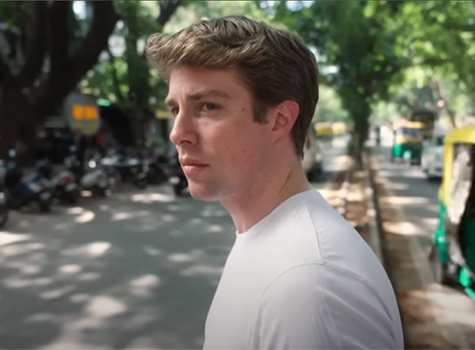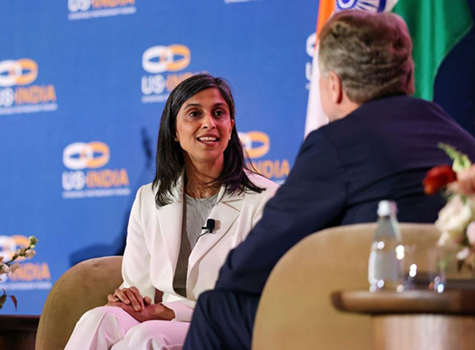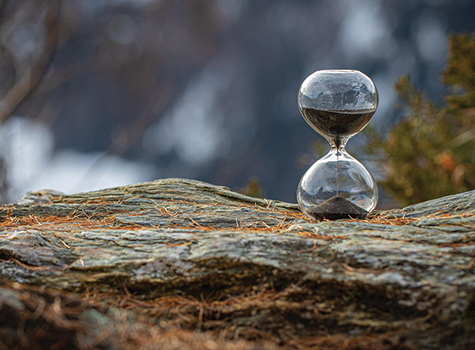By Preethi Sriram

As I continue to learn more about Classical Indian Dance, I am realizing how it seems to be its own “language family.”
Language is a portal to the mind and to the thoughts and emotions of others. It is a way to share information and ideas. Having knowledge of one language can be beneficial for sharing feelings amongst a group of people who may understand the same language.
Bilingualism and Multilingualism can have individual benefits and can help to make a person be able to think and share ideas to different groups. By learning and understanding a new language as well as understanding the structure, it feels like a way to “open” one’s mind and allows for “multidirectional” thinking. Being bilingual or understanding the concepts of bilingualism/multilingualism teaches a life lesson as well: there can be more than one way to say a sentence, just like there can be more than one perspective.
But what if words are not enough – or someone is not able to communicate through words? How can communication occur? Maybe hand gestures could be the language used instead of words.
When learning about the history of modern sign language evolution from an online search, its beginnings can be seen from when monks had taken a vow of silence. Because they still had to communicate, they thus created a rudimentary way of “speaking” to each other. In the 1500s, a Spanish Benedictine Monk took these signs to teach deaf students in Spain, which created a path for the inception of the formal sign language. Sign language helped in opening another “portal” to those who may not have been able to speak, and prior to the creation of the language, it was hard for those who were not able to speak to participate in society effectively.
Parallels to sign language can be seen in the Classical Indian Dance Forms. An aspect of the dance that I have been learning more in depth is the hand gestures, which can be seen as analogous to sign language. These signs can then be used to help tell a story.
Each sign can be thought of as a “word.” Each word put together makes a sentence, and each sentence can be made into multiple sentences/stories. The dance hand gestures follow a similar concept.
There are Single Hand Gestures (Asamyuktha hasta), double hand gestures (Samyuktha hasta), and many “intermediate” hand gestures (Viniyoga hasta) and gestures to denote the various divinities (Devatha hasta). Thus, the hand gestures taught within Indian Classical Dance have parallels that can be seen to the “family” of sign language.
While many may be familiar with the concepts of hand gestures within classical dance, there are many more parts to the dance for the language beyond words/gestures that are important in communication.
The language of the body and expressions are an important feature of Indian classical dance as well. For instance, expressions are taught for how to convey a mood or “Rasa” of a dance. Without words, how does the face/eyes convey Love? How to convey compassion? What would the eyebrows do if one is angry?
n Tamil literature, there was a five-year-old boy called Urutticanaman who cannot speak, but when he hears the correct commentary of the sutras or teachings, tears fall from his eyes, and from his body, his hairs will stand like goosebumps.
His expressions could bring parallels to “abhinaya” of the dance or the aspect of the dance where expressions are used to help with the story telling. Urutticanaman was expressing concepts within expressions known as “Saatvika Bhava” by displaying bodily goosebumps and having tears fall from his eyes.
With the combination of hand gestures, body language, and keeping rhythm with the musicians, the dancer can then convey the language of storytelling from the comprehensive usage of their body.
When learning Classical Indian dance, from a personal perspective, I am learning to be able to communicate in the language of the body which is a portal of communication for understanding the self, communicating to the audience, and to the divinities. It is a way to keep us interconnected to each other and to reach various audiences, who may need different modes of communication.
This series of articles is about the journey and unique insights of an adult dance student learning classical Indian dance. An introduction to the experiences and a perspective of taking classical Indian dance as both an American and an Indian, and how this shapes her personal journey.
Preethi Sriram is a classical Indian dance enthusiast and lifelong learner of dance. Contact:”ˆSriramPreethi@hotmail.com.



